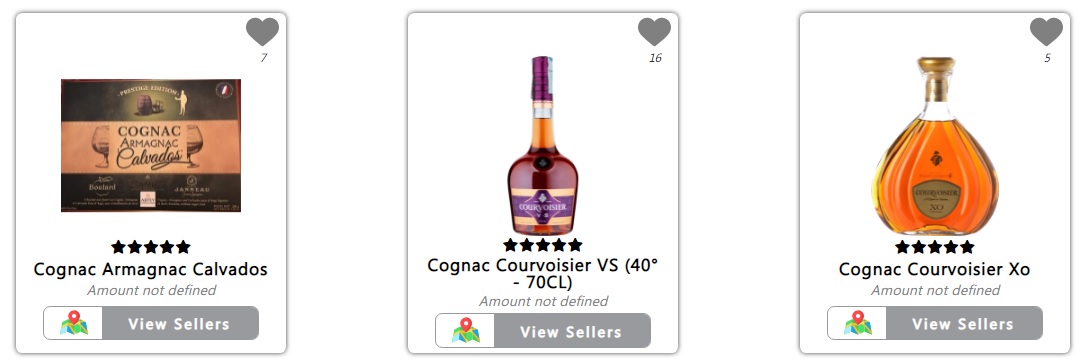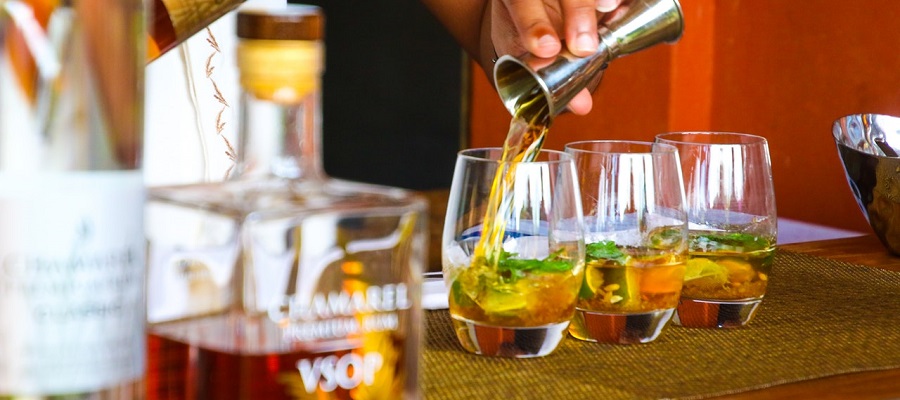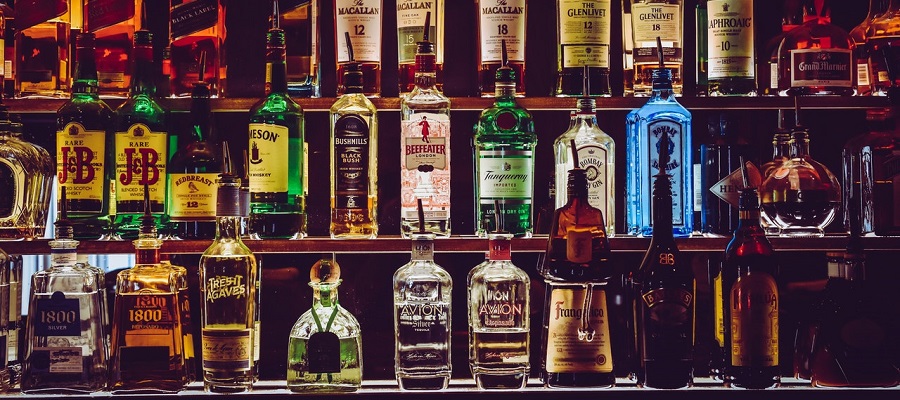French cognac, just like brandy, is made from grapes. However, in addition to many similarities, both spirits also have some important differences. In our guide, we explain the role played by the origin of the grapes used, the differences in distillation and alcohol content, and why a cognac is not necessarily better than a brandy.
Where you can buy Cognac and Brandy
Visit our food Index database and search for the cognac or brandy of your choice. We have plenty of sellers listed.

The history of brandy and cognac
When you stand in front of the spirits shelf in the supermarket today, few people are aware that brandy and cognac were perceived and sold as identical spirits for a long time. This changed in Germany only with the end of the 1st World War and the reparation payments to be made by Germany. The so-called "Champagne Paragraph" stipulated that, among other things, brandy from Germany could no longer be sold as Cognac.
Only brandy produced from grapes grown in the Cognac region (i.e. the departments of Charente, Charent-Maritime, parts of Dordogne and Deux-Sèvres) was allowed to bear this name. From now on, the designation of origin "Cognac" was protected - brandy and Cognac suddenly no longer the same spirit. Cognac is also protected within the EU as a regional designation of origin. What is less well known is that the designation "German brandy" is also protected and subject to certain conditions during production.
Brandy tradition in Europe and the world
But the distinction between cognac and brandy is not solely a story between French and German wine distillates. Brandies made from grapes have a long tradition in many regions of Europe and the world, some of which are also protected designations. In addition to German brandy, brandy from Spain, which is largely produced in Jerez de la Frontera (Brandy de Jerez), should be mentioned here. However, brandies from different grape varieties are also produced outside the European Union with Armenian or Georgian brandy as well as Pisco from Peru and Chile. An interesting fact is that, for example, brandies from Armenia and Georgia are marketed outside the EU as "Cognac", as this term is not protected there.
The different production of brandy and cognac
One of the major differences in the production of brandies and cognac lies in the origin of the grapes. In the case of Cognac, as already mentioned, the grapes must come from the French departments. Other brandies enjoy greater freedom in the selection of grapes. Compared to Cognac, this does not necessarily lead to a poorer quality, since the Cognac sites are also not all equally good and many other factors, such as storage, also influence the taste of the brandy.
The use of different grape varieties
For the production of Cognac, mainly the white grape varieties Ugni Blanc (Trebbiano), Folle Blanche and Colombard are used. The selection of grape varieties follows the tradition and experience of the region; the grape varieties just mentioned have proven to be suitable grapes. To a much lesser extent, other grape varieties such as Meslier-Saint-François, Jurançon Blanc, Montils, Sémillon, Select and Folignan are also used for Cognac production. Legally, the use of specific grape varieties for Cognac, as with other wine spirits, is not precisely prescribed.
The distillation of Cognac and brandy
There are also differences in the distillation of Cognac and brandy. For Cognac, for example, only the use of copper stills is permitted, which are roughly comparable to Scottish pot stills. For other brandies made from grapes, the use of column distillation is also permitted, with which larger quantities of alcohol can be produced in a constant process. While in the case of Cognac no additional alcohol may be added before storage, in the case of brandy a composition of at least 50% brandy with the addition of another wine distillate (with less than 94.8%) is generally possible according to EU Regulation 110/2008.
Regulations for storage in wooden barrels
Last but not least, legal regulations for storage differ for Cognac and wine spirits. The lowest Cognac quality level is called V.S. Cognac and must be stored in oak barrels for at least 2 years. For brandy, a storage period of at least 6 months is required, provided that the capacity of the barrels is below 1,000 liters. If larger barrels are used, the minimum storage period increases to 12 months. Both cognac and brandy may have caramel added for coloring. Thus, one should not be deceived by the color of a cognac or brandy, as a dark color does not necessarily promise a great age or high quality.
The different alcohol content of brandy and cognac
Furthermore, the minimum alcohol content of brandy and cognac is also regulated differently. In the European Union, the basic rule is that brandies must have a minimum alcohol content of 36%. However, in order to bear the designation German brandy, a minimum of 38% is required. French Cognac goes even further and must be bottled with at least 40%. This leads, for example, to the curiosity that Asbach Uralt is allowed to call itself a German brandy, but Chantré is not, because its alcohol content is too low. The German spirit Wilthener Goldkrone, on the other hand, is distilled from grapes, but because of the addition of agricultural alcohol and an alcohol content of only 28%, it is neither a German brandy nor a wine spirit.
Cognac or Brandy - Which Spirit is Better?
In comparison, cognac and brandy have many similarities but also some clear differences. Both spirits belong to the same family of spirits and are produced very similarly. Some small but important differences come from the specifications for storage, distillation and the addition of alcohol. While the youngest cognac must mature in oak barrels for at least 2 years, brandy can be bottled after only 6 months at the earliest. In addition, unlike Cognac, the production of the spirit by column distillation is also permitted and a certain amount of agricultural alcohol may be added to the distillate before storage.
When comparing cognac and brandy, it is noticeable that the specifications for cognac are somewhat stricter than for brandy. However, this does not mean that cognac is fundamentally better. There are good cognacs as well as good brandies. For both spirits, it depends on the exact production method, the raw materials used, the tradition and the expertise of the distillers and cellar masters whether a tasty cognac or brandy is ultimately created from the grapes.
If you're searching for a similar contribution on Rum, read this contribution.


